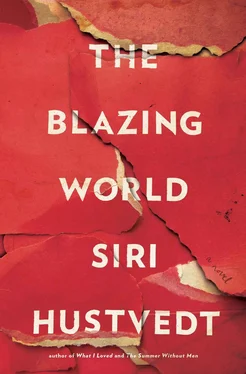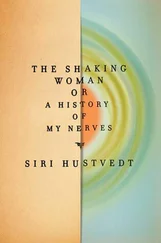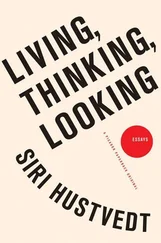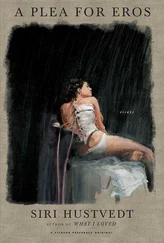Burridge: Are you telling me that she made Houdini , too?
Hess: No. I don’t believe she had anything to do with it. The purpose of this interview is simply to get another perspective on the Burden-Rune relationship. More information may surface in time, but it may not. My interest is not purely in determining the facts — who did what when. If that were possible, it still wouldn’t resolve the larger question. Even if Rune never had a single idea, drew a line of the plans, or lifted a finger in the construction of Beneath , I believe Burden would have said it could not have existed without him, that it was in some important way created between her and him. That is probably also true of Houdini , except that he made it.
Burridge: Are you saying that he was part of Beneath or not part of it? It’s one way or the other.
Hess: I think not. Even if Rune had nothing to do with their creation, extricating him from Beneath and those twelve windows connected to it is still impossible. Burden knew that Rune was embedded in the project, necessary to how it would be understood. Rune, in turn, was influenced by his role as her mask. Masks are all over Beneath , after all. It changed his work forever and, whatever his intention was for Houdini , it couldn’t have existed without Burden.
Burridge: You’re saying the influence went both ways, is that it?
Hess: Yes, and I think she was enormously ambitious. As Brickman writes, she wanted to include the “proliferations” as part of a larger work. For her, Rune was an essential character in the theater she called Maskings , probably the most important one, because the two of them seemed to have been involved in some kind of one-upmanship and competition that played itself out in numerous ways. His death came as a blow to her, and from her writings it’s clear she felt implicated in some way.
Burridge: I thought you were interviewing me.
Hess: You’re right. I’ve been carried away. Is there anything else you would like to say before you run?
Burridge: Yes. Unlike you, I actually knew Harriet Lord, I mean Burden. She was a quiet, elegant lady with some talent, I admit, and a shrewd collector, but it strikes me as far-fetched that she was some virago mastermind who cooked up these elaborate plots or was playing some game of wits with Rune.
Hess: But you said earlier that you thought she might have fictionalized her diaries.
Burridge: Well, who knows? It’s a possibility. I believe she had some input in Rune’s work. She did some drawings. That’s proven, but he called her a muse in an interview, you know. The piece by Eldridge was mostly hers. He came right out and admitted it. Tish, well, maybe. But Rune? No, I don’t believe it. She played some small part in it, that’s for sure, but isn’t it just possible that she used his reputation to lift herself up into the limelight? I mean, let’s face it, as an artist, she was nobody. As I said before, her journals might be her own wishful version of events.
Hess: I think she did want Larsen as a vehicle “to lift her up,” as you say, but he reneged on their agreement. There are other people who were close to Burden who have stories to tell. Her journals are not the sole source of information. What was your term, virago mastermind ?
Burridge: That’s what you’re proposing, isn’t it?
Hess: It may depend on your definition of virago , but perhaps it is. Thank you so much for your time.
Burridge: Thank you, and good luck with the book.
A Dispatch from Elsewhere Ethan Lord

E wakes up to discover he is lying in his childhood bed at 1185 Park Avenue, a narrow white bed with head- and footboard made of tall wooden slats. He wonders why he is not on North Eleventh Street. He knows he is no longer a child. He knows that he does not live in this apartment anymore. His dislocation perplexes him as he makes an attempt to sit up, but the sheets and covers resist him as if they were alive, and he punches the strangling bedclothes several times before he wrestles them off of him, leaps to his feet, and slides gracefully and without effort across the floor, down the hallway, and into the kitchen. E opens the cupboard to retrieve a no. 2 coffee filter, but he cannot find it. His disappointment is acute. Then he notices that layers of dirt and large lumps of mold oozing liquid and sprouting gigantic spores have grown inside the cabinet. He stares at the configuration of mycelium in the fungal forms and says aloud to himself that these white lines resemble a familiar face, but what face? He slams the door to shut out the mess. Then, through the window on the far left side of his peripheral vision, he detects a flutter. Turning toward the stimulus, which he imagines for two or three milliseconds is a flag, E looks outside and sees a pair of long pants, a suit jacket, and a tie suspended horizontally in midair and noiselessly flapping in the wind. He notes that the suit’s trousers are pointing due east. The suit pains him.
Quickly, E opens the window, gathers up the disembodied suit in his arms, and brings the garments inside, all the while sensing that the clothes contain an unseen person and that he has rescued this invisible man from being blown away by the wind. E feels relief as he rocks the suit in his arms back and forth. He notices a piece of paper protruding slightly from the jacket pocket. As he looks more closely, he sees that the pocket is unusually large and that it bulges outward. He pulls out the long white paper and reads a name: Sophus Bugge. Then, without any transition that he is conscious of, E finds himself no longer holding the suit but looking down at it, and, disturbingly, it is no longer a suit. It seems to have produced a fringe of ruffles and, on the whole, developed a flimsy, diaphanous quality that had not been part of it before. It looks suspicious. As he stares at the transformed suit, he feels more and more irritated and is convinced that he has mislaid or forgotten something important. Just as he asks himself what that thing might be, the article of clothing begins to jerk upward, as if there is an animal beneath it. Terrified, E opens his mouth to cry out, and he wakes up, his heart beating. He is back in his apartment in Williamsburg on North Eleventh Street, and the morning sunlight has come through the cracks in the blinds. E’s heartbeat slows. He doesn’t stir but reviews the dream in his mind. He is working on dream material for his fiction. He knows that if he acts too quickly, the dream will evaporate. He knows he must rehearse the dream rooms in his mind. The actual Park Avenue apartment and the dream Park Avenue apartment are not identical, but they share common traits.
After coffee and a slice of pizza he finds wrapped in tinfoil on the second shelf in his refrigerator, E types the above version of the dream to study it. He also picks up the book he was reading the evening before, Jesuit Reports on Indian Missions in New France, 1637–1653 , and finds the following passage he has underlined. In 1648, Father Paul Ragueneau wrote: The Hurons believe that our soul has desires other than our conscious ones that are both natural and hidden, made known to us through our dreams, which are its language. E remembers that before he went to sleep, he was reading another Jesuit priest’s report, which described the Hurons’ ritual enactments of dream narratives during the day, performed so that the soul’s hunger can be satisfied. The priest related that one day he found a man rummaging wildly through his camp, throwing objects in what appeared to be a desperate search for some object. When the priest asked the man what he was doing, he answered that he had killed a Frenchman in a dream and was looking for some object to appease his soul. The priest gave the man a coat, telling him it had belonged to a now-deceased Frenchman. The offering calmed the man, and he went on his way. E asks himself if this story is the origin of his own dream’s flying coat.
Читать дальше













